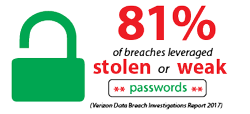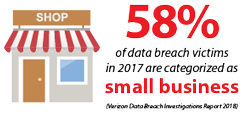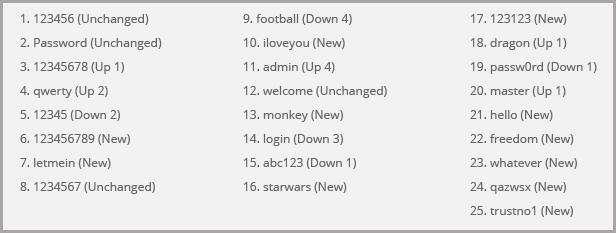
Weak and Stolen Passwords
Make working from home safe and easy

Call a Specialist Today! 800-886-4561| Free Shipping! 


Insecure password practices are exploited in 81% of cyber attacks worldwide, and 61% of all attacks target businesses with less than 1,000 employees. While employee education and training can help, what’s most needed to reverse this trend is for authentication to require additional proof of identity beyond simple username and password, and to be widely deployed by all companies – no matter their size. Only then, will cyber criminals no longer be able to use stolen credentials to access and infect systems or steal data.



Most employees are not intentionally trying to compromise company security; however you should ask yourself what password practices they now use to cope with the proliferation of online accounts requiring them. According to an often-quoted study by Microsoft Research, “The average user has 6.5 passwords, each of which is shared across 3.9 different sites. Each user has about 25 accounts that require passwords, and types an average of 8 passwords per day.”
A 2015 Dashlane survey revealed that each person had over 90 online accounts, and had to reset their password using a “forgot password” link for 37 of those accounts in the prior year. Companies that require frequent resetting of passwords make it even harder for users to craft strong passwords and then later recall them. In this environment, it’s understandable that users have simplified their passwords – creating ones that can be serialized - and limiting them to a few that are used across multiple accounts.

http://fortune.com/2017/12/19/the-25-most-used-hackable-passwords-2017-star-wars-freedom/
For businesses, as employees use simpler and weaker passwords – this puts networked resources at a greater risk for breach. Even worse, when an employee’s credentials are stolen from other sites and the credentials happen to contain the same password that gives them entry to your privileged networks, then the hackers can walk right in the front door masquerading as the user…and you are none the wiser.
We’ve reached the limit of the protection that solely password-based access to systems can provide. What’s needed are additional measures to ensure the identity of the user…which is what multi-factor authentication (MFA) provides.
Given that usernames and passwords are often the only hurdle to accessing systems that yield financial rewards, hackers have taken a keen interest in lifting them when they can. Some common ways to compromise this information include:
Once they have valid credentials, they will use them to access systems and steal data, consume resources with botnets, install ransomware, and even steal more credentials that might unlock other networks and personal data.
Keep Criminals Outside Your Network with AuthPoint
Our unique multi-factor authentication (MFA) solution not only helps to reduce the likelihood of network disruptions and data breaches arising from lost or stolen credentials, but we deliver this important capability entirely from the Cloud for easy set-up and management. AuthPoint goes beyond traditional 2-factor authentication (2FA) by considering innovative ways to positively identify users, and our large ecosystem of 3rd party integrations means that you can use MFA to protect access to the network, VPNs, and Cloud applications. Even non-technical users find the AuthPoint mobile app easy and convenient to use!
Ensure Every Point of Access Is Protected
WatchGuard’s technology ecosystem includes an extensive lineup of documented 3rd party integrations with AuthPoint, including the most popular cloud applications, web services, VPNs and networks. Ensure every point of access is protected with AuthPoint by leveraging its powerful technology ecosystem.
GuardSite.com
A division of BlueAlly
1225 Crescent Green, St. 115
Cary, NC 27518
Our team is here to help you! We are available from Monday – Friday: 7am - 9PM PST and Saturday – Sunday: 9am - 6PM PST and attempt to respond to all inquiries within 1 business day.
Please Note: Technical support is provided by the manufacturer. If you have product support related questions, please contact the manufacturer directly.